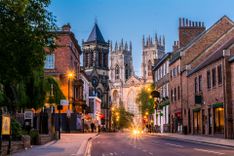“He’s taking them home to his greenhouse,” says Martyn. Something he wishes he had in times like these. Increasing stock by propagation is vital to maintaining this seemingly natural landscape, designed by English landscape architect Lancelot “Capability” Brown.
Widely considered “the Master of the English Garden”, Brown’s painterly designs proclaim to improve nature by art. But for Martyn, building a resilient future is as important as conserving the cultural heritage. “Climate change is bringing the seasons forward every year,” says Martyn. “And it’s making them more extreme.”
“Some of the native trees, like the common beech, tend to struggle after prolonged drought and intense heat,” he continues. “And start dropping their branches. But non-natives, like the American oaks, Swamp Cyprus and Walnut, seem to be better adapted.”










